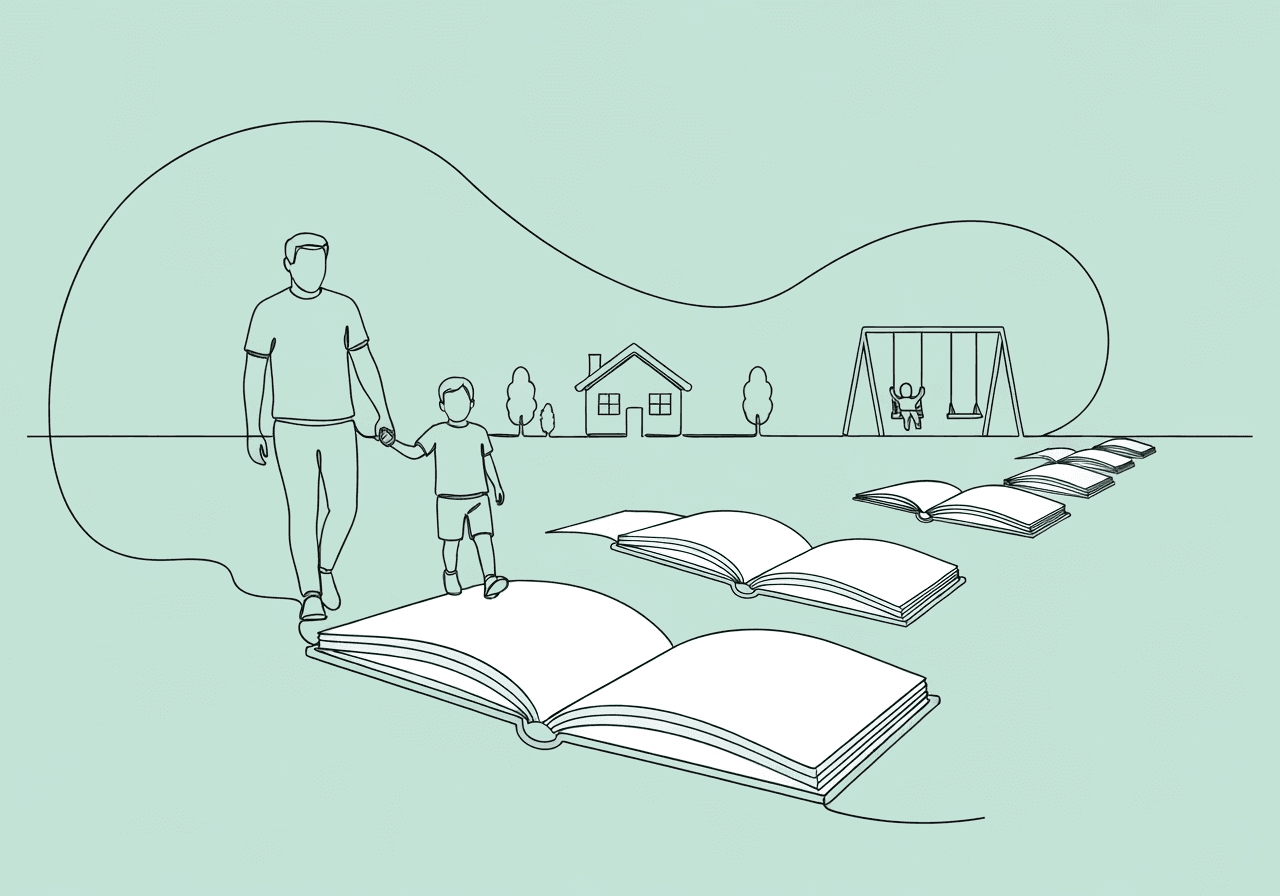Social Validity in ABA Toilet Training: A Parent's Guide

For families dealing with ABA therapy for your autistic child, potty training can seem like a huge hurdle. The true success of ABA toilet training social validity relies on more than skill building—it must feel meaningful and doable for everyone involved. A 2023 study from the Journal of Autism and Developmental Disorders reveals that parental buy-in boosts long-term adherence and outcomes, with over 80% of families reporting higher satisfaction when goals fit home life (A Telehealth Delivered Toilet Training Intervention for Children with Autism).
This guide helps you evaluate and adjust a toilet training plan that honors your family's needs while applying proven ABA techniques. You'll learn practical steps to make the process acceptable and effective, fostering real independence for your child.
In this article, you'll find:
- A clear definition of social validity and why it matters for potty training goals for autistic children.
- An overview of ABA techniques tailored to family challenges.
- Insights into common barriers and solutions.
- Steps to assess and implement a plan with high toilet training acceptability for parents.
- Real strategies for celebration and generalization.
What Is Social Validity in ABA Toilet Training?
Social validity in ABA means the goals, procedures, and outcomes of an intervention are acceptable, meaningful, and effective to those involved, like parents, children, and caregivers. For ABA toilet training social validity, this involves crafting a plan that teaches toileting skills while blending into your family's routines and values. The Behavior Analyst Certification Board (BACB) ethics guidelines stress that prioritizing social validity promotes dignity and quality of life without overburdening families (Ethics Code for Behavior Analysts - BACB).
In potty training goals for autistic children, social validity covers three main areas: goals, procedures, and outcomes. Goals should emphasize functional independence, like self-starting bathroom trips, over strict deadlines that overlook sensory needs. Procedures use gentle, evidence-based methods that support rather than punish. Outcomes track real-life wins, such as fewer accidents on outings, which builds family confidence.
Low social validity can derail even strong training. A 2024 review in Child & Family Behavior Therapy noted that programs lacking parental input saw 40% higher dropout rates, underscoring the value of family-focused tweaks (Reflections and Critical Directions for Toilet Training in Applied Behavior Analysis). Involve your Board Certified Behavior Analyst (BCBA) from the start to match the plan to your home priorities.
Core elements of social validity include parental satisfaction with the plan's ease and family fit, child-centered skills that improve daily life like joining school trips, and cultural adaptations that respect your beliefs and schedules. This base turns toilet training into a team win, easing stress.
How Do ABA Principles Support Toilet Training?
ABA principles turn toilet training into a structured, adaptable process through reinforcement, prompting, and visual supports that build skills gradually. Positive reinforcement rewards wins, like potty sitting, with stickers or praise to encourage the behavior. Research from the National Autistic Society indicates this method raises success rates by up to 90% in autistic children with steady use (2023) (Toileting - a guide for parents and carers).
Prompting and fading play key roles in potty training goals for autistic children. Begin with physical help for wiping, then shift to verbal hints as confidence grows—this fosters independence without upset. Visual aids, such as picture schedules for the bathroom routine from entry to handwashing, tackle common autism communication hurdles. A 2020 study in Behavioral Interventions found visual supports cut training time by about 25 days on average (Caregiver-implemented toilet training procedures for children with autism).
These principles work well in daily family settings. Scheduled potty sits every two hours avoid accidents, and simple progress charts from ABA notes keep motivation high. If home routines differ, focus on steady integration.
ABA techniques often include task analysis to break toileting into 8-10 steps taught one by one, differential reinforcement to praise dry pants over accidents, and errorless learning to guide right actions early and limit errors. These not only build skills but raise toilet training acceptability for parents by keeping things predictable and positive.
What Barriers Arise in ABA Toilet Training?
Hurdles like sensory issues and time limits often challenge ABA toilet training, undermining social validity if ignored. Many autistic children face aversions to toilet sounds or textures that spark resistance—evidence points to about 50% showing toileting resistance tied to sensory challenges (Toileting Resistance Among Preschool Age Children With and ...). Medical concerns, such as common gastrointestinal issues like constipation, can cause discomfort and stall progress in autistic children (CDC Autism Data and Statistics).
Inconsistent caregiver approaches add another obstacle, particularly with packed schedules or split homes. Varying prompts confuse kids, stretching the usual three-month training longer. Public trips heighten anxiety, as new settings can cause setbacks. A 2023 Autism Speaks survey showed 60% of parents named "time commitment" as a main worry, calling for adaptable plans.
Behavioral pushback, like fleeing the bathroom from fear, often roots in past negatives. Parents might fear rewards create dependency over real skill. Work with your BCBA on fixes, like portable visuals for trips.
To overcome these:
- Get medical clearance from a pediatrician to address GI problems.
- Make sensory adjustments, such as noise-canceling tools or comfy seats.
- Align the team with shared data logs for unified efforts.
Proactive steps like these improve toilet training acceptability for parents and smooth the path ahead.
How Can You Assess Social Validity in Your Plan?
Assessing ABA toilet training social validity begins with honest talks and basic tools to check if the plan suits your family. Start by chatting goals with your BCBA: Do they value independence over haste, matching your child's profile? Tools like the Treatment Acceptability Rating Scale (TARS) let parents score procedures on a 1-7 scale for practicality—research links higher scores to stronger adherence (A Randomized Controlled Trial of Functional Communication ...).
Hold weekly reviews to gauge procedure fit. Consider: Are prompts kind? Does reinforcement seem genuine? For potty training goals for autistic children, follow outcomes with data on fewer accidents or self-starts, plus family stress checks. If skills don't carry over publicly, add generalization practice.
Open sharing of worries about time or steadiness lets your voice refine the plan. Telehealth parent modules build assurance, with a 2024 study noting 75% higher satisfaction after teamwork (A Telehealth Delivered Toilet Training Intervention for Children with Autism).
Simple steps include:
- Fill out a TARS survey after week one.
- Note family thoughts in a joint log with your BCBA.
- Check progress every three months, tweaking for issues like senses.
- Mark wins to keep spirits up.
This keeps the plan growing, lifting toilet training acceptability for parents over time.
Implementing Socially Valid Toilet Training at Home
A socially valid ABA toilet training plan adapts to family flow, using fitting rewards and real progress markers. Aim for goals like "independent wiping 80% at home" to grow confidence slowly. Choose rewards your family likes, such as added play, skipping mismatches— a 2023 study found parents rated custom rewards 90% more acceptable (Evaluating the Acceptability and Social Validity of a Caregiver-Led Toilet Training Intervention).
Add visual schedules and timers for sits, easing prompts as abilities rise. For carryover, rehearse in diverse spots like shopping to lock in skills. Transition rewards from often to natural cheers for lasting results.
Mark advances with family cheers for dry days to strengthen ties and drive. Watch for slips like missing cues, using data to adjust.
Tips for home:
- Let siblings model positively to make it routine.
- Pack portable kits for trips.
- Stop if tension builds, restarting with BCBA help.
This method builds freedom while keeping social validity, making training a helpful path.
Frequently Asked Questions
How Does Social Validity Boost ABA Toilet Training Effectiveness?
Social validity improves results by making parents and kids see the plan as valuable, aiding follow-through and success. Programs with strong parental input show better skill carryover than strict ones, cutting dropouts for lasting gains (Social Validity in ABA Treatment for Autism).
What Are Typical Potty Training Goals for Autistic Children in ABA?
Goals center on need awareness, full routine control, and independence in various places. ABA approaches target self-starts and mostly accident-free days, adjusted for sensory traits to support life quality without overload (Toilet Training Children With Autism and Developmental Delays).
How Do Parents Tackle Sensory Hurdles in Toilet Training?
Ease sensitivities through slow exposure, like soft seats or quiet aids, paired with positive rewards. The National Autistic Society (2023) notes 70% gains when visuals help overcome aversions (Toileting - a guide for parents and carers). Team with your BCBA for custom fits.
What Part Does Parental Role Play in Toilet Training Acceptability?
Hands-on planning raises acceptability by aligning methods to family ways, per a 2020 study, building trust and easing worry through joint choices (A Parent-Oriented Approach to Rapid Toilet Training).
How Long Might ABA Toilet Training Take for Autistic Children?
Timelines differ, but research averages 32-88 days for urinary control, or roughly three months with reliable ABA (Toilet Training Children With Autism and Developmental Delays). Readiness factors guide pacing for each child.
Are Telehealth Supports Available for ABA Toilet Training?
Yes, remote coaching via telehealth aids access, with 2024 data showing 80% satisfaction in guiding routines and cues (A Telehealth Delivered Toilet Training Intervention for Children with Autism). It suits families needing flexible help.
ABA toilet training social validity turns a tough challenge into a strengthening family step, rooted in proof that values acceptability and true advances. Matching goals to your child's needs and home setup teaches key skills while growing shared assurance—evidence shows this aids better skill carryover. Collaboration cuts hurdles, advances potty training goals for autistic children, and ensures enduring freedom.
Next steps: Meet your BCBA to check goals via a quick acceptability check. Log a week's family views on progress, refining rewards. Link with support groups for tips—small moves bring big changes to a plan that fits you.
Popular in Family Resources
- 1
Autism Aggression Family Guide: Working with ABA Teams
23912 min read - 2
ABA Treatment Plan for Parents: Essential Guide
1906 min read - 3
Understanding ABA Progress Notes for Parents (Without the Overwhelm)
1635 min read - 4
ABA Session Data for Parents: Unlock and Interpret
1527 min read - 5
Natural Environment Teaching (NET) at Home: A Parent's Guide to Generalizing ABA Skills
1496 min read
Popular in Family Resources
- 1
Autism Aggression Family Guide: Working with ABA Teams
23912 min read - 2
ABA Treatment Plan for Parents: Essential Guide
1906 min read - 3
Understanding ABA Progress Notes for Parents (Without the Overwhelm)
1635 min read - 4
ABA Session Data for Parents: Unlock and Interpret
1527 min read - 5
Natural Environment Teaching (NET) at Home: A Parent's Guide to Generalizing ABA Skills
1496 min read
Related Resources
Explore more helpful content on similar topics

Reinforcement Schedule Fading for Parents: ABA Essentials
Learn reinforcement schedule fading for parents in ABA. Transition from continuous to intermittent reinforcement at home for skill maintenance, generalization, and lasting independence. Discover practical tips and toolkits.

How to Write Social Stories for Parents: ABA Tips
Learn how to write social stories for parents with ABA tips. This step-by-step guide helps create personalized narratives to ease transitions, build routines, and foster social confidence in children with autism. Discover visual supports and implementation strategies for family success.

Essential ABA Generalization Strategies for Families
Discover essential ABA generalization strategies for families to empower children with autism at home. Learn to integrate skills into daily routines, fade prompts, and maintain progress with practical tips and expert collaboration advice.